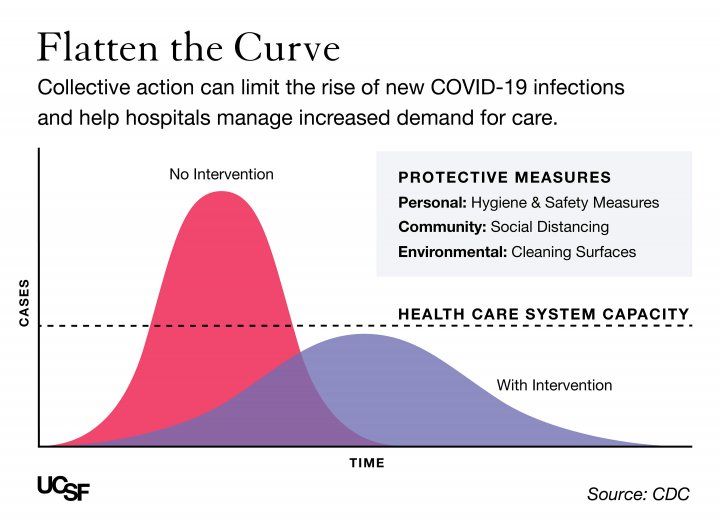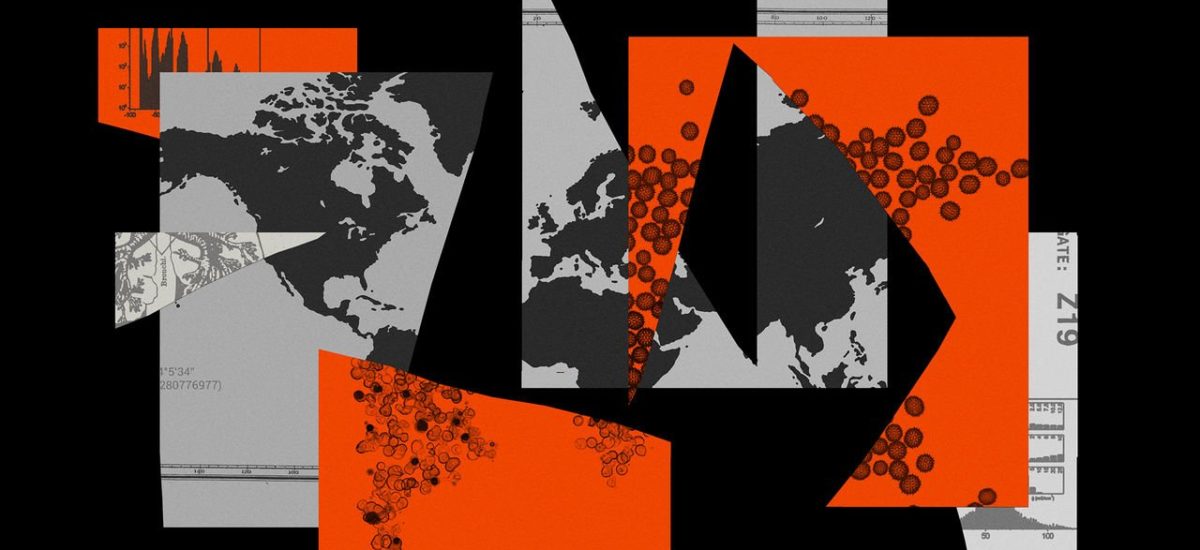Image courtesy The Economist
Shashika Bandara is an Associate in Research at the Duke Global Health Institute. He tweets at @shashikaLB.
As unprecedented events unfold due to the pandemic caused by the novel strain of coronavirus (COVID-19), misinformation can be deadly. This is a brief guide to the pandemic, policy efforts and a 7-step plan as to how we can contribute.
What is COVID-19?
This a novel strain of the coronaviruses (CoV) – a large group of viruses that can cause common colds but also can cause more severe illnesses. Severe Acute Respiratory Syndrome (SARS-CoV) in 2003 and Middle East Respiratory Syndrome (MERS-CoV) in 2012 were both caused by different strains of coronaviruses.
An important fact to keep in mind is that not all is known about this virus yet, and that the information is expected to be updated. More on the basics of this virus can be found here in this short 4-minute video by the World Health Organizations (WHO).
The novel strain of coronavirus officially named COVID-19 had the first case identified in China and now is declared a pandemic.
What is an epidemic and a pandemic?
Epidemic is an increase, usually sudden, in the number of cases of a disease than what is normally expected in that population, in that area. Pandemic is an epidemic that has spread over several countries or continents affecting a large number of people.
For example, both MERS-CoV and SARS-CoV were considered epidemics due to limited regional impact, while COVID-19 has been declared a pandemic by the WHO due to its global impact.
More information about other terminology associated with pandemics, epidemics and disease outbreaks can be found here.
How to protect yourself?
COVID-19 spreads through respiratory droplets – droplets from coughing or sneezing that can spread via close contact such as handshakes, hugs etc.
The WHO has outlined very simple steps that are easy to follow:
- Wash your hands frequently and/or use alcohol-based rub to kill the germs. Regularly clean your personal belongings (e.g. phone). Here is a video-guide on how to properly wash your hands
English: https://www.youtube.com/watch?v=3PmVJQUCm4E&feature=youtu.be
Sinhala: https://www.facebook.com/hpbsrilanka/videos/123749012212887/
Tamil: None available at the time of publishing - Be conscious of your habits and avoid touching your face (eyes, nose or mouth)
- Practice habits such as covering your mouth and nose when you cough or sneeze (or covering with a tissue and disposing it immediately in a garbage disposal)
- Maintain social distancing (WHO recommends 1 meter which is 3 feet) in general and especially from those who are coughing or sneezing
- If you think you are showing symptoms such as cough, fever or difficulty in breathing follow instructions from Sri Lanka Ministry of Health. You can call the Sri Lanka’s Health Promotion Bureau for more information at 1999 – which can be accessed by any network
If you practice these steps you will be helping to flatten the curve and reduce the disease spread.
What is flattening the curve?
As it is very difficult to seal off all those who are infected by the COVID-19 from the non-infected community, our efforts in social distancing and hygiene matters in reducing the number of cases from increasing. By reducing the number of cases, we will contribute to lessening the burden on the health system and healthcare workers (doctors, nurses, supporting staff) and also will be saving money that will go into treating the sick. While COVID-19 is affecting us currently the most, our healthcare workers and healthcare system also have to care for those who are affected by other diseases and injuries.
We will essentially be helping to flatten the curve of the disease spread by taking protective measures.

If you do not contribute to “flattening the curve” say by trying to ‘brave” the pandemic, thinking how can I possibly get infected at the big match, or belittling/disregarding government directives you will be putting other citizens, healthcare workers, military (who are supporting this effort) and wasting national resources. Resources that can be used to control the pandemic and reduce community spread of the COVID-19.
If you want to learn more about “flattening the curve” you can refer to this article that explains the impact of disease spread in more detail and via animations.
Global effort, gaps and Sri Lanka
As per the global preparedness monitoring board despite the World Bank committing $12 billion to support country responses to COVID-19 there is an estimated $8 billion funding gap for a global response. The global preparedness monitoring board co-convened by the WHO and the World Bank has indicated that G7 and G20 countries need to fill the funding gap. This funding gap includes a $2 billion needed for development of a COVID-19 vaccine. More on the details of the funding gap can be found here.
Each country is addressing the COVID-19 pandemic using different methods based on the strengths and weaknesses of their health and governance systems. China has shut down the Hubei province using strict control, South Korea has set up drive through testing centers, and US has declared a national emergency and is advocating for social distancing. United Kingdom was taking a more contentious approach in trying to build “herd immunity” but now has shifted its policies to promote social distancing based on new data.
Sri Lanka has shut down government schools and universities, declared a national holiday on March 16, 2020 and has extended it to a 3-day holiday. Sri Lanka has also joined the regional effort of SAARC countries including developing a fund to fight COVID-19. However, the general election is scheduled to be held as planned on April 25, 2020. Election on schedule also means political gatherings leading up to the election, which goes against the directives issued by the Sri Lankan ministry of health.
What can we do?
Based on international and national guidance above , here is a quick seven step plan that we can consider in addressing the COVID-19:
- #Followhealthguidelines
As a person, follow international and local health guidelines in social distancing, hygiene practices and monitoring yours and your loved ones’ health. - #workremotely
If you are a company and can manage your work by working remotely, please let your employees work remotely and provide paid leave for support staff for at least two weeks. - #cancelgatherings
If you are an organizer of a big-match, conference, gathering strongly consider cancelling those events for the good of the public health. You cannot ‘brave’ the coronavirus – and you will be harming others. - #fightCOVIDmisinformation
If you are an influencer on social media, journalist please be responsible for the information and opinions you share. To do this you can I) check official sources II) include links of your sources in tweets, articles, posts III) check for updates and update previous posts IV) do not advocate for policies that are not evidence based V) do not disagree with the government health officials/sources for the sake of disagreeing. One uninformed tweet or post or article can do more damage than you can imagine in crisis situations where people are desperate and anxious. - #explainCOVIDpolicies
It is vital that we explain public health policies that we implement such as holidays, closures of offices via notices, emails or any other communication methods. For example, here is Dr. Prasanna Gunasena explaining the reasoning behind national holiday in Sri Lanka and here is Canada’s health minister Patty Hadju explaining why travel bans do not work. - #COVIDmentalhealthcare
As this is a time of high anxiety and uncertainty. Since we are also advised to socially isolate ourselves, it is good to look to the mental health of ours and others through methods of reducing anxiety. Especially, if you know of those living alone or need support, a phone call or text might be very useful to their mental wellbeing. If you know elderly relatives, aunties and uncles you can perhaps support them by doing their groceries for them. - #bekindduringCOVID
This is a crisis of global proportions and we do not have all the answers. The only way we can get through this, is together by being kind to one another. Being kind includes practicing good health practices, by not creating misinformation, by not attacking potential patients, by not discriminating against others, and by being aware of mental health as well. This list is not exhaustive but is a start.
Want to keep up (and not get misled)?
If you want to keep up with the global COVID-19 response, policies and want to avoid misinformation here are some sites to visit and people to follow on Twitter. This is not an exhaustive list and some professors, officials tweet in their personal capacity.
Sites:
- Health Promotion Bureau of Sri Lanka: http://www.hpb.health.gov.lk/web/index.php/en/ and https://www.facebook.com/hpbsrilanka/
- Rolling updates on COVID-19 by the WHO: https://www.who.int/emergencies/diseases/novel-coronavirus-2019/events-as-they-happen
- Coronavirus resource center by the Johns Hopkins University: https://coronavirus.jhu.edu/
- Global COVID-19 Interactive map: https://coronavirus.jhu.edu/map.html
- Center for disease control and prevention (US): https://www.cdc.gov/coronavirus/2019-nCoV/index.html
Twitter:
- Health Promotion Bureau of Sri Lanka: @HPBSriLanka
- World Health Organization: @WHO and @WHOSriLanka
- Tedros Adhanom Ghebreyesus (Director of WHO): @DrTedros
- Soumya Swaminathan (Chief Scientist, WHO): @doctorsoumya
- Lawrence Gostin (Director of WHO Center on Public Health & Human Rights): @LawrenceGostin
- Devi Sridhar (Professor of Global Public Health at University of Edinburgh): @devisridhar
- Gavin Yamey (Professor of Global Health and Public Health at Duke University): @gyamey
- Alexendra Phelan (Professor of Global Health Law at Georgetown University): @alexandraphelan

